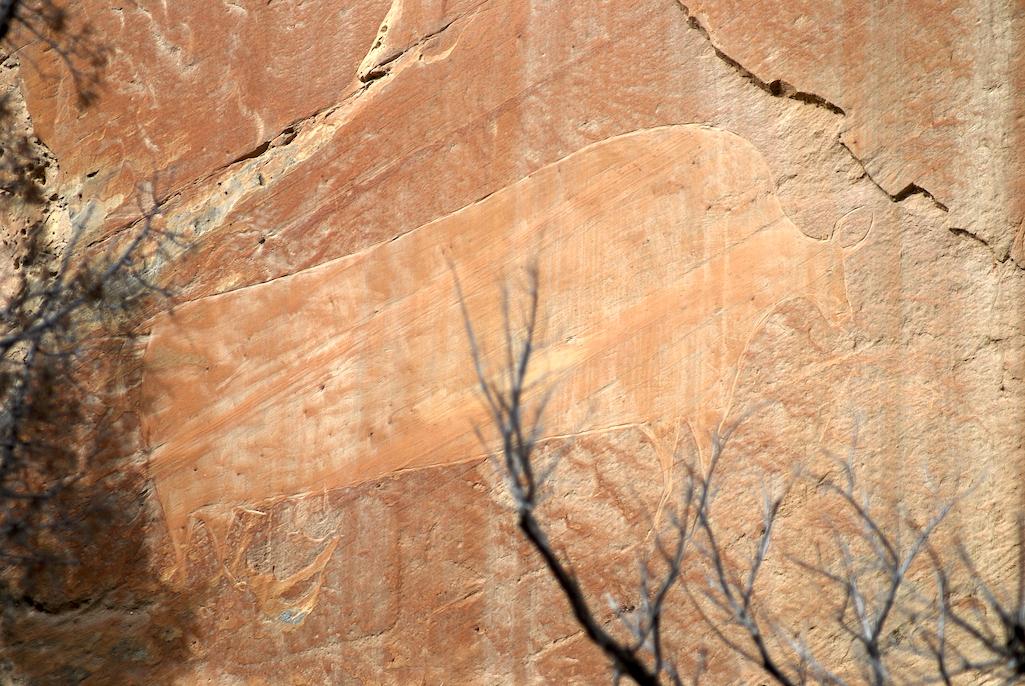
A petroglyph panel in Arches National Park/Rebecca Latson file
Op-Ed | It's Time To Designate A National Petroglyph
By Joel Berger
University Chair in Wildlife Conservation, Colorado State University
Editor's note: This column initially appeared in the Salt Lake Tribune and is reprinted here with the author's permission.
If one looks to distant continents, they will see deserts and mountains, many similar to ours. Carved in stone are wildlife figures, some 10,000 years old. The inscriptions celebrate the essence of being – spirit, animal, earth, and sky.
The Gobi Desert has its etched saiga, which survive today as the world’s most northern antelope. Twyefelfontein in the Namib Desert has its ancient carvings of lions and rhinos. At 15,000 feet on the Tibetan Plateau are endangered wild yaks whose ancestors are imprints in rock. What these petroglyphs share are poignant glimpses of species central to people long ago.
North America too has its celebs. Caribou engravings are in the far north, bison etchings from Saskatchewan to the Dakotas and Idaho, a bestiary of carvings echoing the human-animal heritage. In 2016 bison became our national mammal. A national petroglyph does not exist despite protection of cultural resources by the 1906 Antiquities Act.

Some of the petroglyphs visible at Petrified Forest National Park/Rebecca Latson

Bison petroglyph in Dinosaur National Monument/Kurt Repanshek file

A sea turtle petroglyph at the Pu'uloa Petroglyph site at Hawai'i Volcanoes National Park/Kurt Repanshek file
Inscriptions of the First Peoples stretched across the Sonora, Chihuahua, and Great Basin deserts. Mark Maryboy, the first elected Native American as a county commissioner (Utah) suggested some 150,000 archaeological sites span Utah’s sacred Greater Bears Ears Area. The Mohave Desert’s Coso Range has 35,000 etchings, most of desert bighorn sheep. California’s Chumash have theirs, as do Paiutes, and many others. Petroglyphs are everywhere — tribal lands notwithstanding they’re on BIA, BLM, USFS, USFWS, NPS, and state and private properties.
Wild sheep were of historic reverence. When Captain Juan Mateo Manje visited the (now) Mexican-American borderlands in the 1700s, horns in Ceson Mo’o were piled high; in the modern Tohono O’odham language, the town’s name means “bighorn sheep heads.” In my fieldwork in central Asia, I’ve seen ibex and Argali horns stacked by Tibetans and Mongolians.
If we wish to pay more than mere homage to our human legacy, we must sustain and support bio-cultural values including the bonds that the First Peoples shared with nature. America has a national mammal. Wouldn’t a national petroglyph enhance respect for Mother Earth and the First Americans who drew inscriptions in stone. Isn’t it time to elevate the telling of these remarkable symbols for future generations at a national level?

 Support Essential Coverage of Essential Places
Support Essential Coverage of Essential Places



